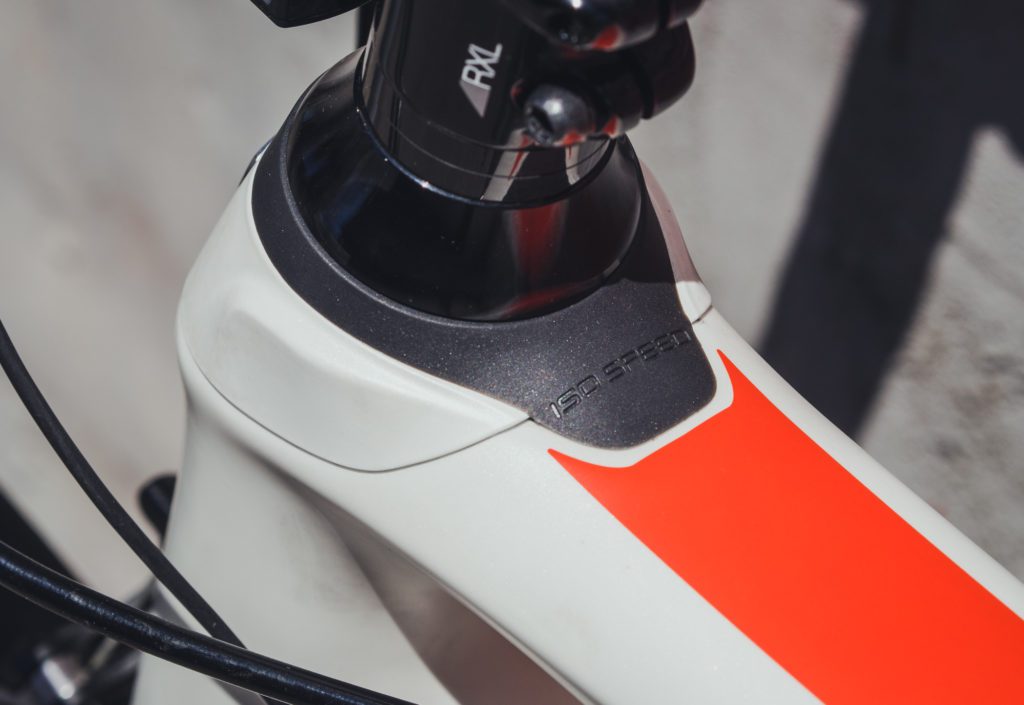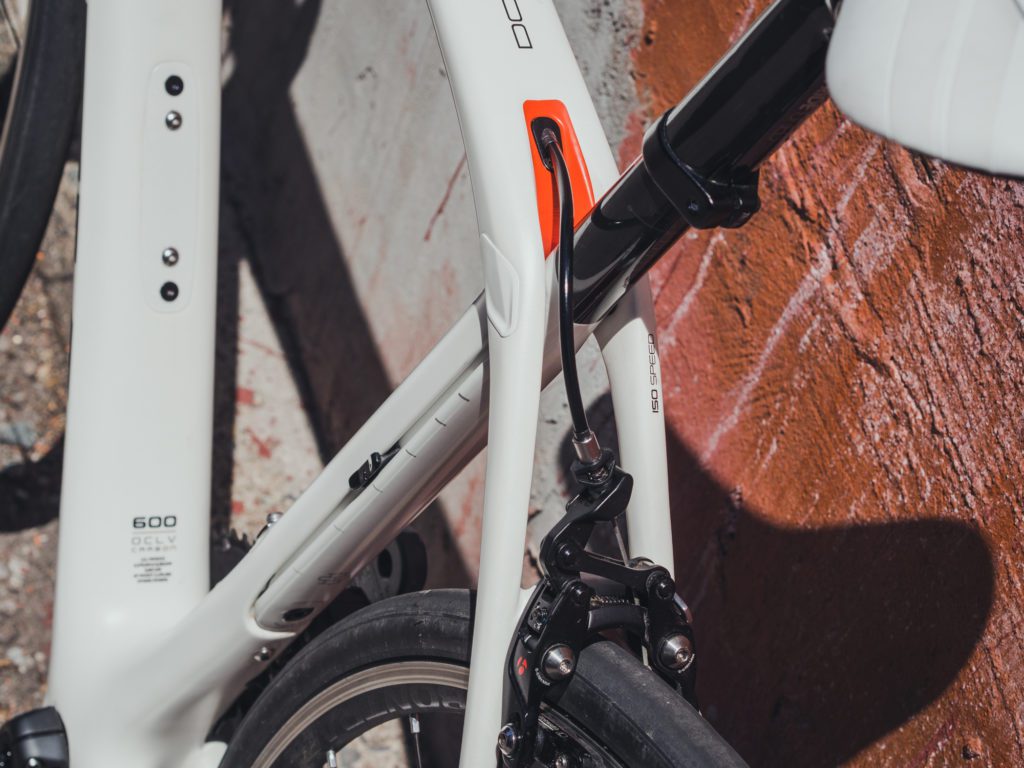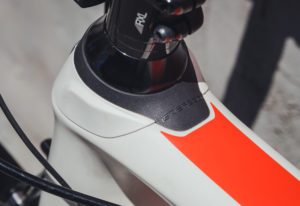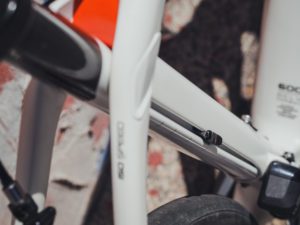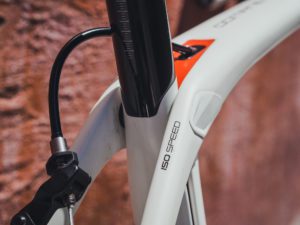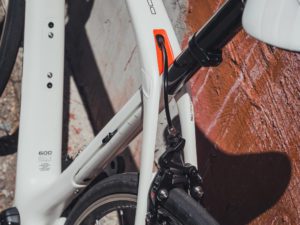My bike Monday: Trek Domane SLR 7 review
The endurance bike gets smoother


There are no cobbles where I live. But, of course, there are crummy roads. I took the Trek Domane SlR 7 to one of the crummiest in my area. In fact, the last time I was on this road was probably three years ago. The cracks and potholes had bashed me around so much that I decided the road wasn’t worth riding. To my surprise, the street was now getting resurfaced. On two of the four lanes, road crews had scraped away the top 3 cm of asphalt leaving the perfect testing ground for the rear and front IsoSpeed, Trek’s mechanical methods of managing road vibrations. The road surface was rough, but consistent in its bumpiness.
RELATED: Watch: What’s the most efficient mini pump?
When the Domane debuted in 2012, it had the IsoSpeed decoupler, which allowed the seat tube a greater amount of movement between the tops of the seatstays. The IsoSpeed decoupler on the latest Domane, launched this past spring, is adjustable. Loosen a bolt on the seat tube to free up a slider. If you place the slider close to the top tube, you get the least amount of compliance. Move the slider toward the bottom bracket to get maximum compliance. The slider essentially acts as a fulcrum that you use to adjust the leverage on this two-piece seat tube. You can tune your ride to suit your weight and road conditions.
Components: Shimano Ultegra Di2, Bontrager Speed Stop, direct-mount brakes
Suspension: Front IsoSpeed, adjustable rear IsoSpeed
Wheels: Bontrager Paradigm Comp
Sizes (cm): 50, 52, 54, 56, 58, 60, 62
Price: $7,900
Website: trekbikes.com
The front IsoSpeed, in the head tube, debuted on the latest model. “There are three bearings in the head tube,” said Tim Hartung, lead design engineer for composite road frames at Trek. “You have your standard lower bearing. The pivot assembly up top actually has two bearings. In the middle of those bearings, you have this pivot mechanism, which we call IsoSpeed. That forces the steerer tube to flex fore and aft. It’s like the rear end: you get your fore-and-aft movement in isolation and your lateral rigidity as well.”
RELATED: Bontrager Air Support HP Pro mini pump review
When I powered along my stretch of road under renovation, I knew the IsoSpeeds were working because my ankles and shins began to hurt. You see, only three contact points (your bottom and hands) benefit from vibration management so you become more aware of the pounding your feet and lower legs get because the bottom bracket has to stay rigid. On the most compliant rear setting, I felt well insulated from the bumps. On the most rigid setting, I felt a little battered. At the front, my hands would get sore. But, I know from taking other stiff bikes on bad surfaces that if it weren’t for the front IsoSpeed, I would have had trouble keeping a steady grip on the hoods. Also, I would have been searching for more comfortable positions while also trying to shake out numbness. I found the Domane performed well on most climbs. If I could stay seated and spin, it cruised well. The Bontrager Paradigm Comp wheels rolled really well, no matter what the grade. On longer climbs with inclines that got me out of the saddle, the Domane didn’t feel very spritely.
The bike really shone – and this is no surprise – on long rides with healthy stretches of gravel road. The Bontrager R3 Hard-Case Lite 28c tires, which actually measured 30 mm on the Bontrager rims, provide a nice ride. The stable bike allowed me to get some really good speed on what would have otherwise been a dodgy gravel descent.
RELATED: Bontrager Aeolus 5 TLR D3 wheel set review
Fabian Cancellara rode his Domane across the white gravel of Strade Bianche this year to win that early season race. This past spring, I found a winner on rough Canadian pavé.
